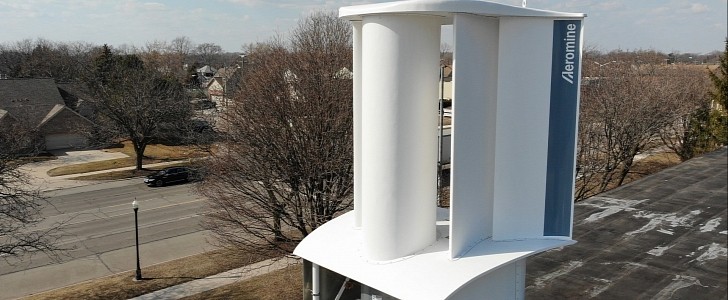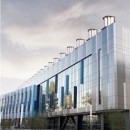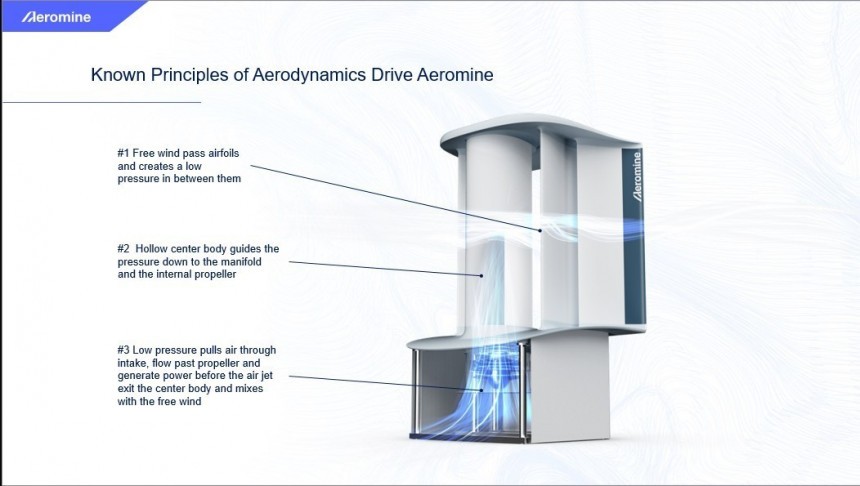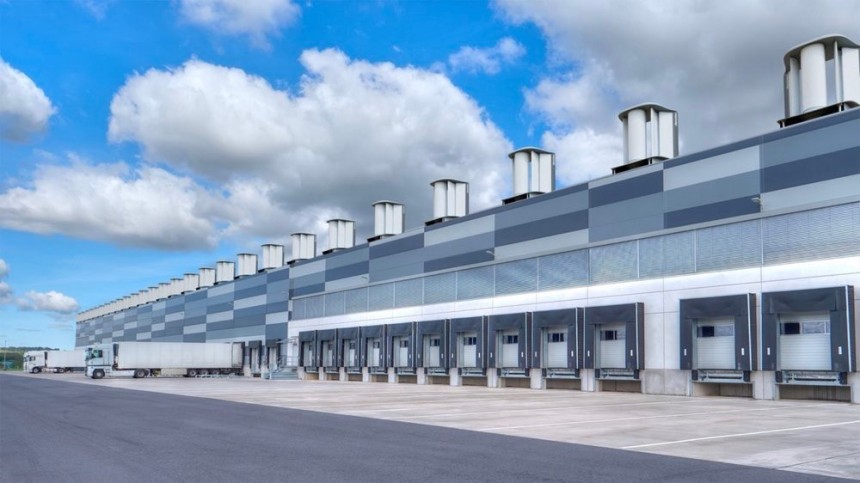Clever aerodynamic use of slow and steady air currents could set a new milestone for large-scale clean wind-generated electricity. At least, that is the claim of one rooftop renewable energy company, Aeromine Technologies, which recently announced a new "game-changing" solution for cost-effective eolian electricity.
Several days ago, the company sent a press release (read it at the bottom of this article) announcing its technology. Since their document lacked details regarding the technology and its practical uses, autoevolution asked the company a few questions about this seemingly attractive new system. Aeromine Technologies combines two critical elements: wind (obviously) and large buildings facing that wind to put their turbines on.
Now, why large buildings, a curious reader might ask? Because the more prominent the structure, the more air currents are pushed toward the roof, where the wind can flow through the Aeromine generators to produce electricity.
The units are the company's patented technology and rely on advanced aerodynamics – similar to airplanes and Formula One cars – to divert the air currents toward the obscured propeller. These generators do not resemble typical windmills, as there are no visible moving parts – like large blades rotating at high speeds – and the vibration-free operation is quiet and effective.
Let's detail a little: with winds as low as 11 mph (18 kph) blowing against a big obstacle – such as a building with a large front side – the air is pushed upwards. Once it reaches the roof, the air passes through the wind units' airfoils. Due to the laws of aerodynamics, the wind catches up speed when flowing through the motionless blades. Watch this short video to see it in action.
High air speed means low air pressure, which is essential for the whole functioning of the unit. Air is effectively sucked through the bottom of the unit inside a hollow vertical tube (see the photos to get a clear picture of this clean energy-generating design) and exists through the open top of the duct.
Inside the tube sits a 5-kW turbine that spins to make electricity – between 10 and 15 MWh annually. In some cases – region- and climate-dependent – the output can reach even higher values. One advantage of this innovative wind-catching electric generator design is the relatively small size (a footprint of 8x10 feet – 2.4x3 meters – and 14.5feet / 4.4 meters in height).
With an individual unit weighing in at 920 lbs. (410 kilograms, mainly fiberglass), one array of generators might burden a building's structure. Aeromine suggests clusters of 20 to 40 rooftop-mounted units (facing the predominant wind direction). Combined with a solar panel system, this wind harnessing system could – in theory – provide "up to 100 percent of a building's onsite energy needs."
Aeromine claims its system "generates up to 50% more power than other sustainable energy options at the same or lower cost." Another significant advantage is the space-saving feature of this type of wind-propelled electric turbine: it is 90% smaller in install surface area than a solar panel array with comparable performance.
And, unlike solar panels, it works as long as the wind blows, regardless of season, time of day (or night, for that matter), latitude, altitude, and weather. Or, to put it in the company's wording: "Large buildings in regions with reasonable winds. Areas with good wind are generally characterized by an average regional annual windspeed above five m/s (11 mph) at heights of 50 meters (150 feet). In many regions, strong coastal sea breezes are useful, even if the annual wind is low. Parts of Los Angeles are characterized by this."
Its only current limitation is the positioning of the units: to be cost-effective, the Aeromine assembly requires (ideally) large structures (warehouses, data centers, office buildings, and apartment buildings) facing the wind.
Since it has just one moving part – the rotor of the generator – maintenance costs are "very light," according to Aeromine, but this is all they have given us so far. One of their commercial pilots is currently undergoing real-life testing at a large chemical plant in Michigan.
The company has not published any commercial details - initial installation and maintenance costs, cost-effectiveness, and energy bill economy. Then again, we should remember that each setup is different, and standard prices are improbable since each project requires a different configuration.
Now, why large buildings, a curious reader might ask? Because the more prominent the structure, the more air currents are pushed toward the roof, where the wind can flow through the Aeromine generators to produce electricity.
The units are the company's patented technology and rely on advanced aerodynamics – similar to airplanes and Formula One cars – to divert the air currents toward the obscured propeller. These generators do not resemble typical windmills, as there are no visible moving parts – like large blades rotating at high speeds – and the vibration-free operation is quiet and effective.
Let's detail a little: with winds as low as 11 mph (18 kph) blowing against a big obstacle – such as a building with a large front side – the air is pushed upwards. Once it reaches the roof, the air passes through the wind units' airfoils. Due to the laws of aerodynamics, the wind catches up speed when flowing through the motionless blades. Watch this short video to see it in action.
Inside the tube sits a 5-kW turbine that spins to make electricity – between 10 and 15 MWh annually. In some cases – region- and climate-dependent – the output can reach even higher values. One advantage of this innovative wind-catching electric generator design is the relatively small size (a footprint of 8x10 feet – 2.4x3 meters – and 14.5feet / 4.4 meters in height).
With an individual unit weighing in at 920 lbs. (410 kilograms, mainly fiberglass), one array of generators might burden a building's structure. Aeromine suggests clusters of 20 to 40 rooftop-mounted units (facing the predominant wind direction). Combined with a solar panel system, this wind harnessing system could – in theory – provide "up to 100 percent of a building's onsite energy needs."
Aeromine claims its system "generates up to 50% more power than other sustainable energy options at the same or lower cost." Another significant advantage is the space-saving feature of this type of wind-propelled electric turbine: it is 90% smaller in install surface area than a solar panel array with comparable performance.
Its only current limitation is the positioning of the units: to be cost-effective, the Aeromine assembly requires (ideally) large structures (warehouses, data centers, office buildings, and apartment buildings) facing the wind.
Since it has just one moving part – the rotor of the generator – maintenance costs are "very light," according to Aeromine, but this is all they have given us so far. One of their commercial pilots is currently undergoing real-life testing at a large chemical plant in Michigan.
The company has not published any commercial details - initial installation and maintenance costs, cost-effectiveness, and energy bill economy. Then again, we should remember that each setup is different, and standard prices are improbable since each project requires a different configuration.









